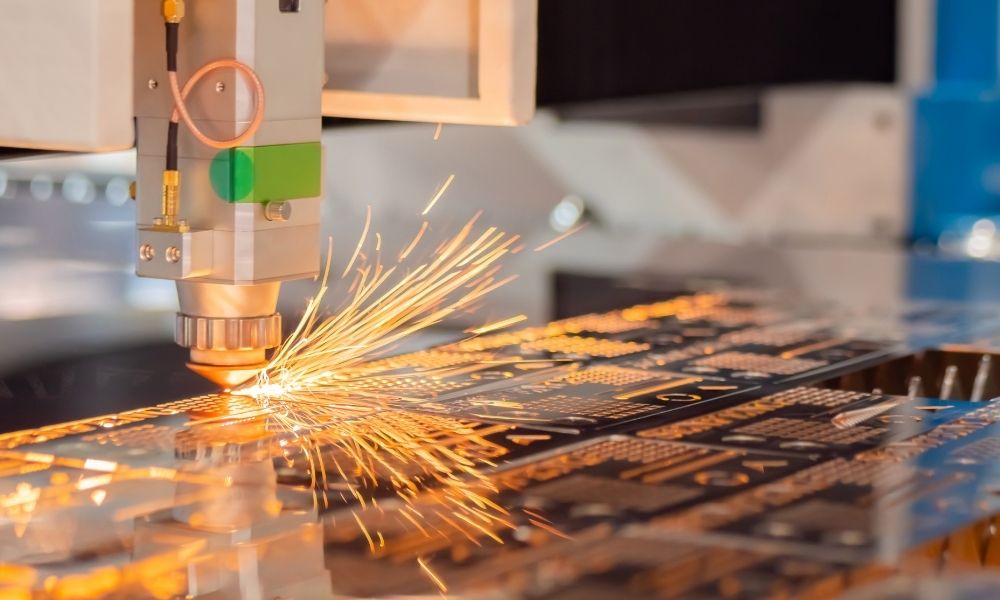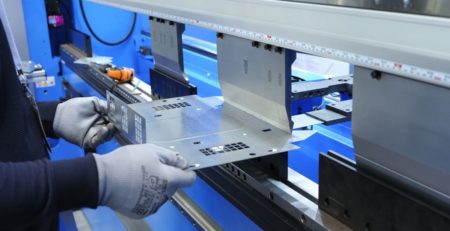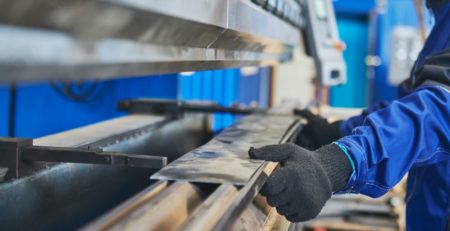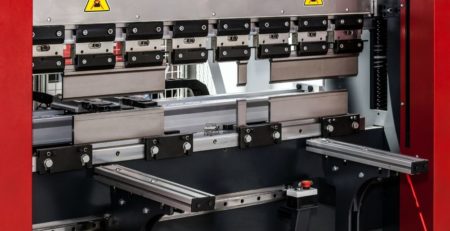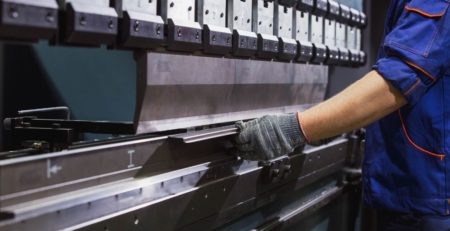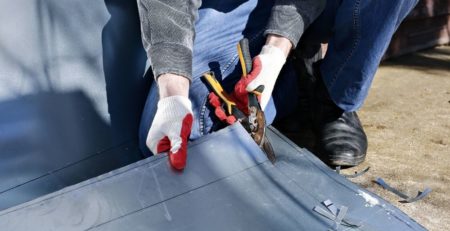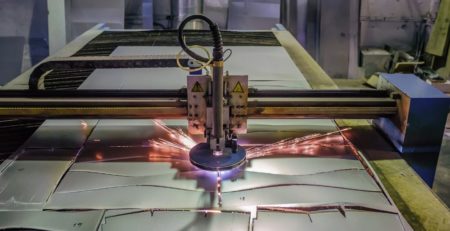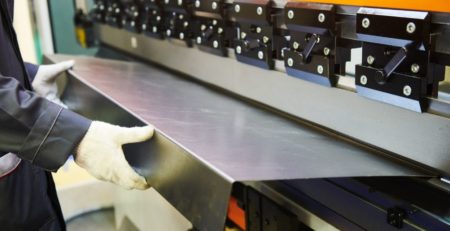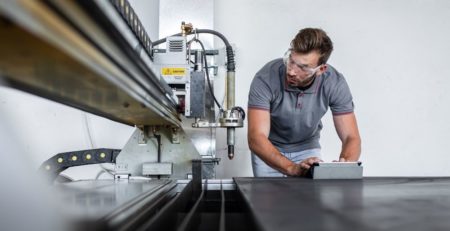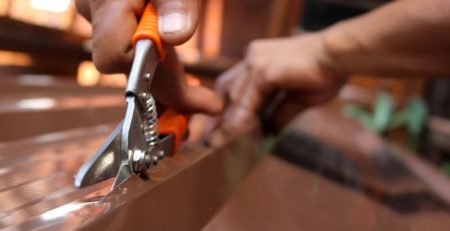Guide to Using 2D Fiber Laser Cutting Machines
Machine shops equipped with the right machines can produce an extraordinary variety of cut, etched, or engraved materials. In this guide to using 2D fiber laser cutting machines, we’ll go over some basics about how laser cutters work, plus some tips about safety.
What Is a 2D Fiber Laser Cutter?
Two-dimensional (2D) fiber laser cutters work on flat materials laid on a table or bed. They can etch, mark, or cut intricate shapes in metal, wood, leather, and plastic, directed by a computer program for precision.
These machines use laser (light amplification by stimulated emission of radiation) light to cut, burn off, melt, or vaporize material to create different shapes and designs. Engineers or designers create their plans on computers using software that translates the designs into computerized instructions for the machine.
The fiber referred to in the name of the 2D fiber laser cutting machine is a special kind of fiber-optic cable. You pump light generated by diodes into the silica glass fiber cable, shrouded in a protective cladding that prevents the light from escaping.
The laser light bounces off the cladding back into the glass core. This is called total internal reflection. Unlike fiber optic cables that transmit phone or internet signals, the fiber cable for laser cutters includes a section called the laser cavity. In this section of the cable, the silica glass has been doped with the addition of one of several different kinds of rare-earth elements.
The laser cavity containing the doped glass fiber permits the production of only one specific wavelength of light. The laser cavity generates laser light. The amplification happens when the rare earth element interacts with light in the cavity, which excites its atoms, causing the release of electrons in the form of photons, also known as particles of light.
A set of fiber Bragg gratings, which are slices of fiber optic cables subjected to lateral laser light, alters their refractive indexes to turn them into tiny mirrors that reflect most light wavelengths but let other wavelengths pass through. Within the laser cavity, one kind of Bragg grating reflects light back into the cavity. Here, the photons crash into and excite additional particles, causing them to also release photons. This causes an exponential increase in the number of photons in the cavity, intensifying or amplifying the light.
The second type of Bragg grating allows only the desired wavelength of light to pass through. That light can be shaped and directed with additional mirrors and lenses to achieve the desired focal length that will produce the etching or cuts called for in the computerized design instructions.
Continuous or Pulsed Operation
Laser cutters are capable of operating with either continuous or pulsed bursts of light. Continuous-wave lasers operate without interruption, making them effective for welding and cutting.
Pulsed operation is where the laser beam operates in bursts at a specified rate for a defined duration at a set level of energy. Pulse operation produces higher energy and works well for cleaning and engraving operations.
Whether a workpiece requires continuous or pulsed laser cutting will depend on what it’s made of, its thickness, and the desired shape or design of the final piece.
Laser cutting produces clean edges and precise cuts, but depending on the material, the heat of the laser may cause the formation of burrs on some types of materials. Read the machine manual to understand which materials it will work on and which ones you shouldn’t subject to laser cutting on that specific machine.
Training, Software, and Diagrams
Operating a 2D fiber laser cutter requires a high level of skill and training. Operators need to understand the parameters for power, speed, pulse frequency (if using pulsed operation), and resolution. The wrong settings can result in burning, melting, or failure to cut all the way through the material.
Laser cutter operators must read blueprints and diagrams and differentiate between different kinds of metals and alloys to determine if they are compatible with the machine. Understanding measurement, optics, and the ability to detect deviations from specifications or quality issues that indicate that the machine may need maintenance are also important.
Fiber laser cutters operate with a cutting nozzle mounted on a gantry that runs along x and y axes at a specified distance from the workpieces. This allows you to accomplish the cutting, etching, or marking according to specifications. The CNC operating control causes the nozzles to move and fire the laser (continuously or in pulses) according to the specific instructions for the piece you’re working on.
Most fiber cutter operators have at least a high school diploma, and most have a college degree, ranging from an associate degree to a graduate degree. An apprenticeship under an experienced machine operator is often necessary to gain mastery of equipment, software, and operation of complex fiber cutting machines.
Safety
Fiber laser cutters can, and usually do, produce light in wavelengths that are invisible to the human eye, but they are extremely dangerous. In other words, laser light that you can’t see can burn your eyes and blind you. That’s why you need to wear properly rated safety glasses. Thick protective gloves may also be necessary.
Fiber laser cutters operate on a limited range of materials. Never stray outside the machine’s specifications for the type or thickness of materials it can cut.
Maintaining a clean work environment is critical to preventing fire and tripping hazards. Also, fiber laser machines may generate dangerous fumes. Most come with a fume extractor, laser safety enclosure, and other safety features that you must use correctly every time you operate the machine.
Operators need extensive training, and everyone who will be operating or in proximity to the machine should learn about fiber cutting safety, get to know the machine, read the manufacturer’s manual, and undergo laser safety training. Safety is of the utmost importance in this guide to using 2D fiber laser cutting machines.
Mac-Tech has expertise in different types of laser cutting machines. We sell new machines, repair and service used machines, and can source parts for machine shop equipment of many types. If your machine shop needs new equipment, maintenance, parts, or repairs, contact Mac-Tech for information and assistance.



